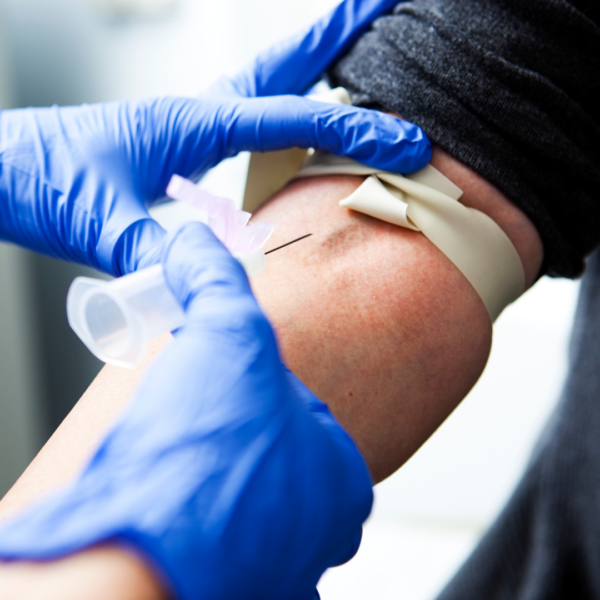Made for Health
What Really Causes Cardiovascular Disease
& How You Can Beat the Odds...

Aaron Hartman MD
February 5, 2025
Subscribe
Never miss out on new content from Dr. Hartman.
You could have “normal” cholesterol and blood pressure—and still be one heartbeat away from a heart attack. That’s because standard checkups often miss what’s really brewing beneath the surface. Let’s look beyond the usual five markers (blood pressure, cholesterol, blood sugar, obesity, smoking) and dig into the deeper factors—like inflammation, oxidative stress, and immune dysfunction—that truly drive heart disease.
Quick Stats: Why Standard Screenings Fall Short

- 50% of first-time heart attack patients have “normal” cholesterol.
- 60% of men & 46% of women who suffer a heart attack never had any official diagnosis of heart disease.
- Over 400 indicators can influence cardiovascular health, yet routine checkups usually focus on just a handful.
Takeaway: “Normal” numbers don’t always mean you’re in the clear. If we only look at blood pressure and cholesterol, we may miss the hidden storms that can lead to a sudden, unexpected heart attack.
3 Core Drivers of Heart Disease
Heart disease isn’t just about plaque clogging your arteries; it’s the end result of a complex chain reaction. Three central processes—oxidative stress, immune dysfunction, and inflammation—work together like a three-headed monster, silently fueling cardiovascular damage.
1. Oxidative Stress: When Your Cells Begin to “Rust”

Imagine a shiny bike sitting outside in the rain. Over time, it rusts. In your body, a similar process can occur at the cellular level:
- As cells do their jobs, they create waste called free radicals.
- Your body produces antioxidants to clean these up.
- When free radicals outnumber antioxidants, oxidative stress occurs—like unchecked rust eating away at metal.
- This “rust” can weaken cells and set the stage for various health issues, including heart disease.5
2. Immune Dysfunction: The Body’s Defense in Overdrive
When your immune system is well-balanced, it zaps infections and helps repair damage. But sometimes it misfires:
- If the immune response stays “always on,” it can lead to chronic, low-grade inflammation.
- In extreme cases—like certain COVID-19 complications—this imbalance triggers a “cytokine storm,” where the immune system becomes a runaway train.
- On a day-to-day level, even subtle immune dysregulation can quietly erode cardiovascular health.
3. Inflammation: A Double-Edged Sword
Inflammation is actually your body’s built-in safety mechanism, but:
- Too much inflammation can damage blood vessel walls, making them “sticky” so harmful fats latch on and form plaques.1
- Unstable plaques may break loose and trigger heart attacks or strokes.2
- Certain chemicals (IL-1β, TNF-α) ramp up the inflammatory cycle, worsening heart disease.3
Collectively, these insights have informed anti-inflammatory treatment strategies aimed at reducing heart disease risk.4
The Metabolic Link: How Metabolic Syndrome Accelerates Heart Disease

Metabolic syndrome (MetS) is a cluster of at least three of these five conditions:
- A large waistline (≥40″ in men, ≥35″ in women)
- High blood sugar (≥100 mg/dL)
- High blood pressure (≥130/85 mmHg)
- Elevated triglycerides (“bad” cholesterol; ≥150 mg/dL)
- Low HDL (“good” cholesterol; <40 mg/dL in men, <50 mg/dL in women)
MetS often goes hand in hand with chronic, low-grade inflammation6 and increased blood clotting.7 This creates a feedback loop—MetS fuels inflammation, and inflammation worsens MetS. If left unchecked, your risk of insulin resistance, type 2 diabetes, and heart disease skyrockets.8
Why Advanced Screening Matters

Relying on standard markers alone can leave many risk factors hidden. Advanced screening typically includes:
- Stricter metrics for blood pressure and blood sugar
- More detailed cholesterol panels (like LDL particle size)
- Inflammation markers (e.g., C-reactive protein, IL-6)
- Oxidative stress indicators
- Immune system assessments
Explore Advanced CVD Screening
Remember: There’s a reason so many heart attacks are “silent” until it’s almost too late. Proactive, deeper testing can uncover the sneaky issues that routine exams overlook.
Practical Strategies: Prevention that Works
Food Is Medicine
Your daily meals can be the safest, most effective form of prevention—or a slow poison. Nutrient-rich foods fight inflammation, reduce oxidative stress, and keep your immune system balanced. Research backs this up:
- PREDIMED & Lyon Diet Heart studies: Showed a 20–30% reduction in cardiovascular events with healthy fats (extra virgin olive oil, omega-3s).
- Nutritional powerhouses: Niacin, red rice yeast, plant sterols, green tea (EGCG), flax seeds, and monounsaturated fats (e.g., olive oil) can improve cholesterol levels and reduce inflammation.
- Quick Tip: Swap refined carbs and sugary snacks for antioxidant-rich veggies, fruits, nuts, and seeds.
Other Lifestyle Keys
- Move More: Aim for 150+ minutes of moderate exercise per week (walking, biking, swimming). Physical activity helps regulate blood sugar, blood pressure, and weight.
- Sleep Well: Poor sleep fuels inflammation. Strive for 7–9 hours nightly.
- Manage Stress: Chronic stress elevates cortisol, which feeds inflammation. Mindful breaks, deep breathing, or a quick walk can help reset your system.
- Stay Hydrated: Dehydration thickens blood, making it harder on your heart.
- Limit Toxins: Smoking and excessive alcohol ramp up oxidative stress, so cut back or avoid them altogether.
Key Points & Next Steps
- Heart Disease Often Hides: Half of first-time heart attacks occur in people with “normal” cholesterol.
- Three Major Drivers: Inflammation, oxidative stress, and immune dysfunction fuel a vicious cycle of damage.
- Metabolic Syndrome Matters: High waist circumference, high blood sugar, blood pressure, and abnormal lipids converge to raise heart risks dramatically.
- Advanced Screening: Go beyond the basics—look at inflammation markers, immune health, and oxidative stress factors.
- Lifestyle Is Powerful: Diet, exercise, stress management, and good sleep are foundational to breaking the cycle of heart disease.
Your Action Plan
- Check Your Risk: Schedule advanced screening with a healthcare provider trained in functional or integrative medicine.
- Clean Up Your Diet: Focus on whole, unprocessed foods that lower inflammation.
- Move, Sleep, Recharge: Commit to daily habits that calm stress and support your body’s repair processes.
Conclusion
Not feeling sick isn’t the same as being healthy. Even if your cholesterol numbers look “normal,” deeper factors may be at play—factors you can control through smarter testing and intentional lifestyle choices. The power to protect your heart is in your hands, one meal and one healthy habit at a time.
References & Footnotes
- Libby, 2006: Inflammation damages endothelial cells, leading to oxidative stress and making vessel walls more adhesive to LDL. [Back →]
- [Tsoupras et al., 2019] Chronic inflammation promotes plaque build-up; unstable plaques can rupture, causing heart attacks or strokes. [Back →]
- [Goswami et al., 2021] IL-1β, TNF-α aggravate inflammation in blood vessels, worsening cardiovascular disease. [Back →]
- [Jones & Patel, 2018] [Back →] Highlights anti-inflammatory treatments for reducing heart disease risk.
- Oxidative stress is linked to conditions including Alzheimer’s disease, atherosclerosis, and heart failure.
- Several inflammatory markers (CRP, IL-6, TNF-α) are elevated in metabolic syndrome: [Back →]
- [Back →]
- [Back →]
Remember: When it comes to your heart, ignorance isn’t bliss—it’s a ticking clock. Advanced testing and everyday lifestyle tweaks can tip the odds in your favor and keep that clock ticking strong for years to come.
